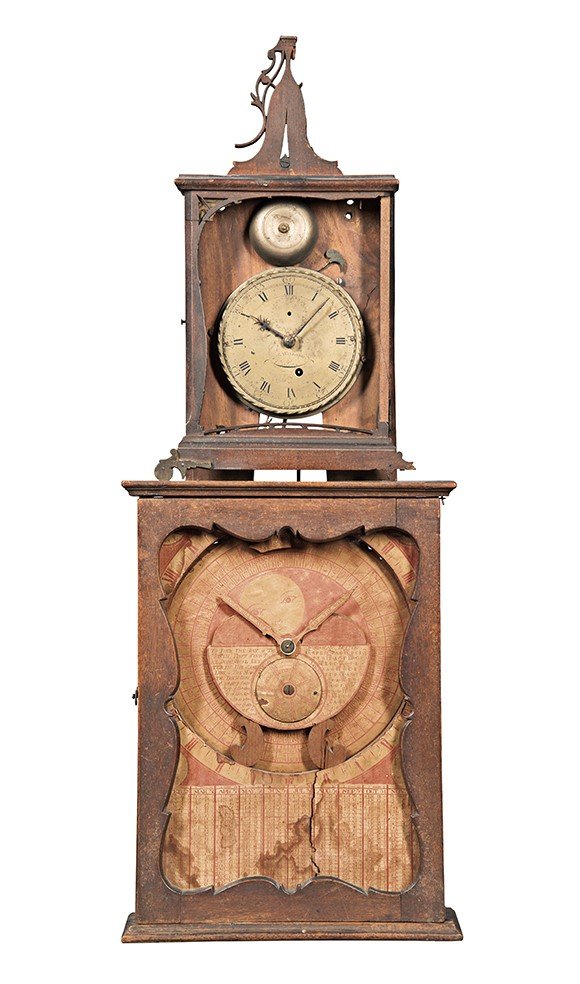Simon Willard (1753-1848) 30-Hour Timepiece with Manual Almanac, Roxbury, Massachusetts, 1781
L2019.1 Loan from Dedham Historical Society and Museum, gift of Cornelius Storrs
Mahogany shelf clock with the remains of a pierced fret top, kidney-shaped dial opening with glazed door revealing the brass, Roman numeral dial marked "S. Willard", seconds dial calibrated with Arabic numerals every ten increments, a cast twist rope bezel around the perimeter, "beetle and poker" blued steel hands and winding at approximately 5.30 position, a bell mounted above the dial with tear-drop hammer to sound the "passing" hours with a single strike, the dial section or upper portion of the case in the form of an early bracket clock is raised up on scroll and brass-faced front feet (only one remaining).
Thirty-hour brass, "passing strike" movement with dead-beat escapement and directly hung pendulum on the pallet arbor, all powered by a single lead weight, and passing strike on the bell mounted above, rear backboard is now gone revealing the movement in the upper section and large wooden calendar wheel in the lower.
L2019.1 Detail
The lower section front of the case with serpentine shaped opening revealing the manual almanac with printed sheets glued to white pine gearing, the intricately and engraved printed sheets in black and vermillion ink were studied extensively in 1965-1990 by Richard W. Philbrick, a noted scholar on printed engravings. Philbrick makes a very convincing argument that these plates were the work of Paul Revere (1735 -1818).
Ht. 28 3/4” L2019.1
Click on the Detail to see a larger view.
